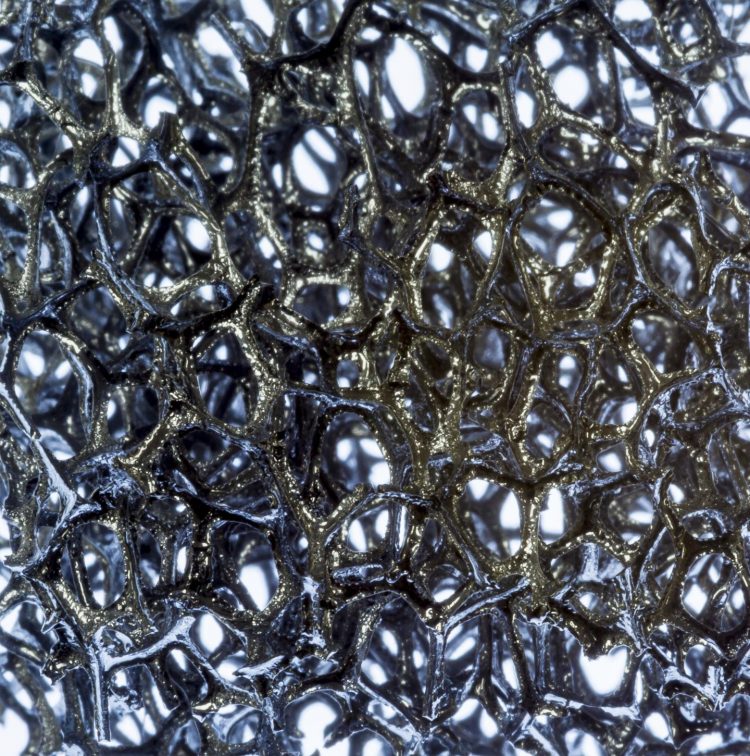New materials discovered to detect neutrons emitted by radioactive materials

This is a close-up image of the boron carbide coated reticulated carbon foam sample used in the experiments. Credit: JHU/APL
Detecting neutrons is key to counterterrorism activities, such as screening cargo containers, as well as other vital applications in nuclear power instrumentation, workplace safety and industry. The demand for detectors has risen dramatically over the past decade while at the same time the usual detection material, helium-3, has become harder to obtain. An advantage of the approach outlined in the paper is that boron is abundant and relatively low cost compared to helium-3. The use of a coated foam, in particular, disperses the boron evenly throughout the detector volume, increasing efficiency by filling in otherwise empty space.
Lavelle and his colleagues' work builds on a series of experiments conducted with scientists at NIST and the University of Maryland that had demonstrated that a process called noble gas scintillation can be controlled and characterized precisely enough to detect the neutrons emitted by radioactive materials. Scintillation refers to a process where energetic particles produce flashes of light when passing through certain materials, in this case xenon gas. Sensitive light detectors record the rate at which these light flashes occur to measure the presence and intensity of neutrons in the environment.
In a follow-on experiment, the research team obtained samples of “carbon foam” coated with boron carbide and placed them in xenon gas. The boron-10 isotope in the coating readily absorbs neutrons. Following neutron absorption, energetic particles are released into the gas and create flashes of light. In this experiment, researchers determined that neutrons captured deep within the coated foam produce large enough flashes to be detected by light detectors outside the foam. Previously, there had been some doubt as to whether the light flashes would actually escape foam, or if the foam would completely shadow them from the light detector.
The next steps in the series of experiments include investigating other unique detector geometries, such as multiple layers of boron-coated thin films, the use of optically transparent neutron absorbers, and finalizing a design for a potential prototype detector.
###
Media contact: Gina Ellrich, 443-778-7796, Gina.Ellrich@jhuapl.edu
The Applied Physics Laboratory, a not-for-profit division of The Johns Hopkins University, meets critical national challenges through the innovative application of science and technology. For more information, visit http://www.
Media Contact
All latest news from the category: Materials Sciences
Materials management deals with the research, development, manufacturing and processing of raw and industrial materials. Key aspects here are biological and medical issues, which play an increasingly important role in this field.
innovations-report offers in-depth articles related to the development and application of materials and the structure and properties of new materials.
Newest articles

Silicon Carbide Innovation Alliance to drive industrial-scale semiconductor work
Known for its ability to withstand extreme environments and high voltages, silicon carbide (SiC) is a semiconducting material made up of silicon and carbon atoms arranged into crystals that is…

New SPECT/CT technique shows impressive biomarker identification
…offers increased access for prostate cancer patients. A novel SPECT/CT acquisition method can accurately detect radiopharmaceutical biodistribution in a convenient manner for prostate cancer patients, opening the door for more…

How 3D printers can give robots a soft touch
Soft skin coverings and touch sensors have emerged as a promising feature for robots that are both safer and more intuitive for human interaction, but they are expensive and difficult…





















